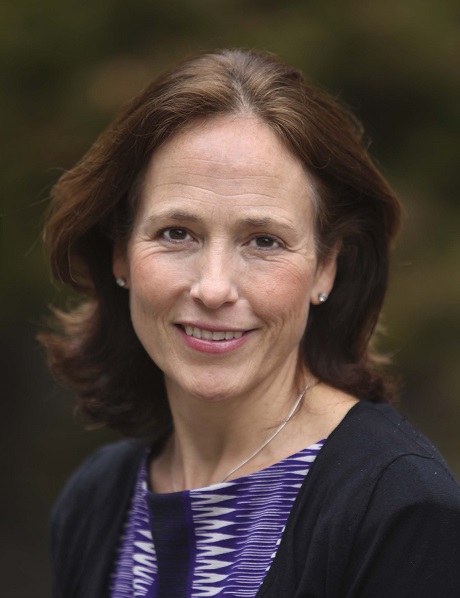
By Patricia Caso/October 28, 2013
Photos Courtesy of Girl Rising
TWITTER: @girlrising
Breaking the cycle of worldwide poverty is a monumental endeavor. Enter Holly Gordon, the architect behind Girl Rising, a movement to educate adolescent girls around the world aiming to alter their unacceptable course of inequality.
“When we start to value girls for their minds, all over the world, we will be honoring their greatest asset. Girl Rising is really about raising the value of the girl.” Holly Gordon
She is also Executive Producer of the gutsy, inspiring film Girl Rising, which is at the heart of the movement. The movie tells the stories of nine girls in nine developing countries to depict how education can be transformative.
I was already affected by Pakistan’s Malala Yousafzai’s remarkable story about girls’ rights to education and wanted to find out more about this innovative movement. I grabbed a few minutes with Holly, a lifelong journalist, to learn more about directing an international strategy for mandating equality in education….
EYE: Why was Girl Rising initiated?
HOLLY: We created Girl Rising because it seemed insane to underestimate the extraordinary ripple effect this one intervention, girls’ education, would have on so many global problems. It’s complicated getting girls to school, keeping girls in school, making sure they learn something.
The biggest drop off for girls is when they hit puberty. So our challenge is to keep girls in school past age 12. If you are going to focus on something, this is a good one to focus on.
EYE: Can educated girls facilitate global solutions?
HOLLY: An 11-year-old at a screening I went to gave me a great answer. She said, “If you don’t educate girls then there probably won’t be the scientist that is going to solve the difficult health problems.” When you aren’t educating half the population you have half the likelihood of having the mental capacity that those human beings bring to solving problems in a community.
“We know that a mother will not eat until her kids have eaten and to have mothers with higher level skills, you will have children who are happier, healthier, safer and have a better shot at life.”
In most of the world women become the center of the household. They make decisions about the health care, and statistically, save more, investing their savings into their families at a higher rate than boys. A woman with education also earns more money. That means she returns more to the community because she can spend more.
In societies where there are more women working in government, you see less corruption and greater social stability. Traditionally, the greater the imbalance of power between men and women, the more violent the society. These are all the various aspects of development that are touched by one single intervention.
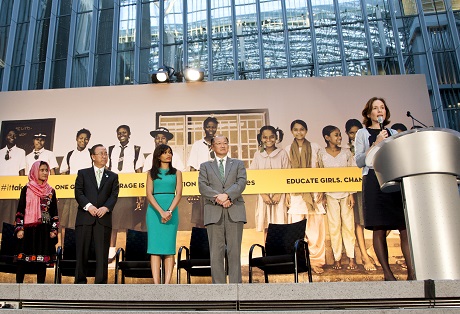
EYE: Is there a common barrier for girls getting an education in developing countries?
HOLLY: It’s different in each case. There are many complexities. Some of it has to do with culture, like child marriage, or poverty like child labor. Sometimes it comes down to the teachers or poor quality infrastructures.
Threats of sexual violence may keep a girl from going to school due to worry that girls will be attacked on their way. It has a lot to do with puberty. At that point they are fair game for all sorts of predators. It has a lot to do with the value of the girl.
She is most often valued for her labor or her body, not for her mind. When we start to value girls for their minds, all over the world, we will be honoring their greatest asset. Girl Rising is really about raising the value of the girl.
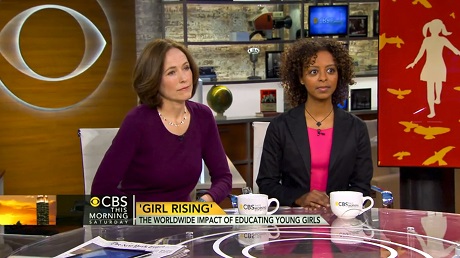
writer of Azmera’s story in Ethiopia/4-27-13
EYE: What goals do you have to achieve this?
HOLLY: First goal is to change minds by passing the message on through our film, social media, boardrooms, even dinners. Next, changing lives by partnering with pros who have proven track records of educating girls. And finally, changing policy by inspiring leaders to influence governments.
EYE: How does one build a movement to make girls’ education viable everywhere?
HOLLY: First we had to create a network of partners, all of whom shared the same values we share–educating girls can transform societies.
“We set up several nonprofit partners all around the world who know what it is like to bring girls’ education to some of the most difficult places in the world. Then we created partnerships with corporations, the private sector.”
Intel is a terrific partner. We also reached out to some of the global A-list actresses in Hollywood and beyond to lend their voices to the film. This garnered attention, made it “hip.” We collaborate with policy partners like Brookings Institute, Population Council, and Nike Foundation who are working on these issues. That was the ecosystem that we built around the project in terms of influencing behavior.
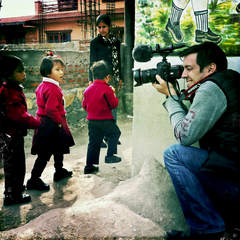
The second part is the content itself. If Richard Robbins, the director, hadn’t made such a powerful, persuasive, beautiful, touching, moving a film as Girl Rising is, we would not have what we have today. The power of the storytelling is really at the heart of the movement.
The stories and the film drive the energy that actually have people all around the world doing something in their communities around girls’ education because they were somehow moved or impacted by the storytelling in the film.
EYE: Why not make a direct fundraising film?
HOLLY: Our film addresses change as well as fundraising. Girl Rising is designed to inspire movement or long-term change. That doesn’t mean a simple “give now.” You have to inspire people to be part of the change.
It’s only an army of changemakers that is going to make change happen. We created an uplifting film showing the hope, the valor of these girls, their courage and determination to succeed.
“Its message is that if only there were an enabling environment for them, if only they were allowed to live to their fullest potential, they would be changemakers; they would be the revolution.”
There would be change that would be good for everyone. Your responsibility as an audience member is to try to change the rules around the lives around these girls’ lives. It’s a much bigger ask than just giving some money.
But we also want you to create a new event that spreads the word, creates new awareness. Then you are part of the movement, not just writing a check and forgetting.
EYE: What is the defining moment or favorite girl in the film?
HOLLY: I have lots of favorite moments and they change each time I watch the film. I find the Egyptian chapter very moving. The way it is shot, so intimately; the truth and the imagination are very compelling. I also love the moment that Suma, from Nepal, realizes that she is a slave. According to Nepali law, slavery is illegal. Without education, she would not have understood her rights.
EYE: What has Malala Yousafzai, the Pakistani girl shot by the Taliban simply because she was a symbol for girls’ education, meant to your movement?
HOLLY: The film was in the middle of filming when Malala was shot. It was shocking! My colleague, Tom Yellin, pointed out that it’s a stark reminder that what we were doing was timely and important. It’s that dissonance between something incredibly tragic happening but you know there are going to be ramifications that there will be something good for the world. It pushed girls education to the top of the global agenda for some time. So that’s a good thing, but at what cost?
Video of Malala speaking before the U.N. on 7-13-13/United Nations
When Malala spoke publicly at the U.N. for the first time since the shooting, I was moved to tears when it became clear that she not only had all her faculties, but also had a steel resolve and a forgiving heart.
Those two things are what great leaders, iconic leaders, are made of: steel resolve and giving hearts. Malala is definitely a symbol of the movement and she is also a 16-year-old girl. She’s funny, humble, and she has handled pressure. Her pressure is to be who she is which is to be an advocate for girls’ education. She was that before she was shot.
EYE: Has social action always motivated you?
HOLLY: This project was actually driven by something actually far more mundane–the story. Of course, I am passionate about girls’ education.I am a woman who treasured my education, and it was supported, emphasized, by my own mother.
For me, journalistically, there are fewer opportunities for really important stories to get the attention they need. The film was in progress before I joined the team, and yet of all the projects, this one was identified as the opportunity to change the world.
“It was global domination for the most important story of our time. That is what I was driven by. And I was driven as a journalist.”
I was motivated by the challenge of not knowing if they could make a good movie about the subject. If they did, then we needed to come up with something so powerful and innovative that would go way beyond one night of television on a network station and be in every magazine, in movie theaters and talked about everywhere.
EYE: Bottom line…what do you see the film and the movement enabling?
HOLLY: I’m talking about the film as a catalyst for reform. The film enables the local conversation. I just went to Nigeria because a community organizer there, Michael, arranged a screening in Nigeria with hundreds of non-profit leaders and school children.
Even though there is not a Nigerian chapter in this film, it allowed for a conversation about early marriage and the rights for the girl-child in Nigeria. That’s what followed the screening!! That’s the way it happens, one community after another.
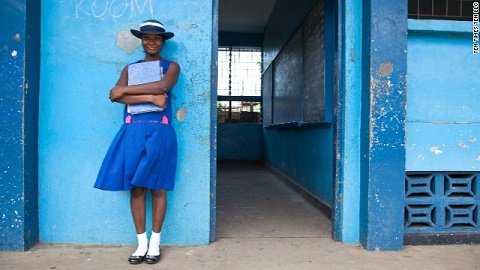
EYE: Are your efforts sustainable?
HOLLY: We think of ourselves as the hub of a movement. It’s sustained by the community leaders who step up and say, “I’m going to bring this to my community.” Out of the 100 people at the screening, there will be two or three other leaders who bring it to their communities.
That can be a campus, a company, or a neighborhood. They pass it on. Social media has been very important in getting the word out. We try to be a catalyst for leadership and provide tools for the process, so leaders continue and sustain the movement on their own. It will run out of steam when the film stops being powerful or when everyone in the world has seen it.
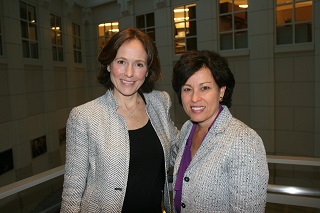
the Intel Foundation
EYE: Can you point to any tangible progress as a result of Girl Rising?
HOLLY: Two million dollars was raised for girls’ education programs around the world. The film has been broadcast in over 120 countries through CNN International. Just this month 2,000 events were held around the world by local organizers.There were more than five billion impressions in terms of global media for attention to girls’ education.
EYE: What follows now?
HOLLY: Girl Rising continues distribution to broad audiences focusing on youth because the youth are the leaders for tomorrow and youth is the star of this film. We are going to be focusing on Nigeria, the Congo and India, creating localized version of the film. Corporate engagement has to be encouraged because they can drive social change. Educating girls is an incredible answer to breaking cycles of poverty.
It’s also an incredible answer to driving gross domestic product. When companies recognize that it is in their best interest, then you have a driver for change that’s fueled by self-interest. And I’m all for it. It’s not just that it’s a nice thing to do; it’s the smart thing to do.
EYE: What do you want a readers and viewers to take away from Girl Rising?
HOLLY: People have to step up, connect and support each other; be visible. I encourage people to organize a screening by going to girlrising.com. It’s easy and fun. I hope they can raise money for the Girl Rising fund after being inspired by the film.
It distributes money to the non-profit partners that work with girls every day and helped us make the film. Call to action begins the cycle of change. Be that leader to start that cycle in your own community. It’s like hosting a party, and it’s not that heavy a lift.
EYE: Your plan for equality in global education is indeed more than optimistic! May your “revolution” continue taking hold for permanent change! Thank you, Holly Gordon, for your time and insights!
###

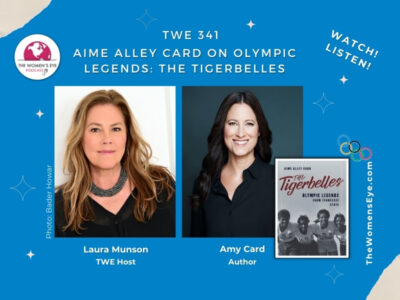
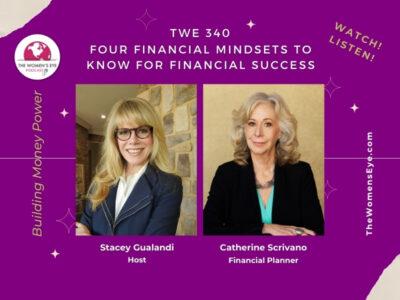
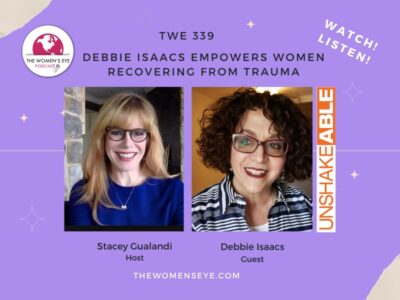
What an inspiring article. “Its message is that if only there were an enabling environment for them, if only they were allowed to live to their fullest potential, they would be changemakers; they would be the revolution.” What an amazing thought. Our screening of Girl Rising is November 12th in Peoria, Illinois and I cannot wait to see this film again! Further, we intend to gather around this subject and create plans for change locally and abroad. Thank you for telling the story, now let’s get to work!
Meridith,
Thank you so much for your comments! It was such a pleasure to speak with Holly and learn about the movement and the whole Girl Rising team. Much success to you and it would be great if you touched base with TWE regarding any developments in relation to your Girl Rising screening.
If you try to stop me,I will just try harder, I am my own master. Girl Rising touched thousands of students here at Sias University .We showed the film at Sias for about two weeks on October , and so grateful that it will back on December.The story encouraged us and give us the power to move further. Girls are strong,courageous ,and unstoppable.